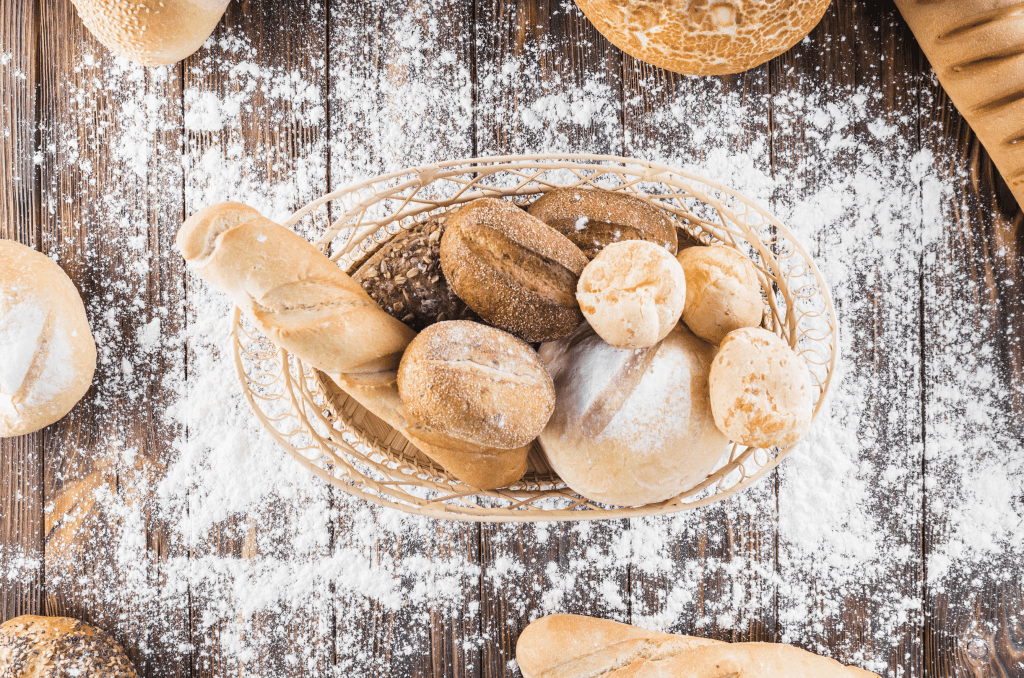Within the tapestry of European bread-making, a remarkable culinary elixir has long captivated the senses and elevated traditional loaves to unparalleled heights. Sourdough, with its ancient origins deeply ingrained in European baking heritage, is the magical ingredient that imparts a tantalizing tang and depth of flavor to an array of beloved breads. From the hallowed halls of French bakeries where baguettes reign supreme, to the rustic German countryside where vollkornbrot satisfies hearty appetites, sourdough’s influence transcends borders and leaves an indelible mark on countless bread varieties across the continent.
The Artistry of French Baguettes: Step into the enchanting world of French bread-making, and you’ll discover the extraordinary alchemy that sourdough brings to the iconic baguette. Crafted with unwavering dedication to tradition, this masterpiece owes its unparalleled character and acclaim to the transformative powers of sourdough. Through the symbiotic dance of wild yeasts and lactobacilli, the dough evolves into a harmonious marriage of a crisp, golden crust and an airy, tender crumb, bursting with a delightful tang.
German Vollkornbrot: The Hearty Revelation: Journeying to the heart of Germany, we encounter the wondrous vollkornbrot, a testament to sourdough’s wholesome prowess. Celebrating the nation’s deep appreciation for whole grains and robust flavors, this dense and nutritious loaf owes its exceptional attributes to the prolonged fermentation facilitated by sourdough. The interplay between the natural sweetness of grains, the mild acidity of the starter, and the intricate web of microorganisms produces a bread that is as nourishing as it is gratifying.
A Pan-European Symphony of Flavors: Sourdough’s captivating influence extends far beyond the borders of France and Germany, leaving its imprint on a captivating array of regional European breads. In Italy, the rustic ciabatta owes its characteristic chewiness and subtle sour undertones to the magic of sourdough fermentation. Across the English Channel, the crusty sourdough loaves of Britain strike a delicate balance between tanginess and depth, making them ideal for sandwiches and toasting.
Nordic Treasures and Mediterranean Gems: The northern reaches of Europe bear witness to the enduring allure of sourdough. In the Scandinavian countries, hearty rye breads take center stage, embracing the tangy nuances that only sourdough can bestow, accentuating the robust flavors of Nordic grains. Meanwhile, in the sun-drenched Mediterranean, nations like Greece and Turkey revel in the touch of sourdough, crafting delectable flatbreads such as pita and lavash, where the slow fermentation process enhances their flavors and textures.
Delights from Eastern Europe to the Iberian Peninsula: As we traverse the diverse European culinary landscape, sourdough continues to captivate palates. From the rich and aromatic rye breads of Poland and Lithuania to the crusty, dense loaves of Spain’s traditional pan de pueblo, the influence of sourdough intertwines with regional baking traditions, creating a symphony of flavors that celebrate each unique culture.
Sourdough stands as the timeless thread that unites European bread-making traditions, infusing each loaf with its captivating tang and depth of flavor. From the hallowed bakeries of France to the picturesque countryside of Germany and beyond, sourdough’s transformative powers have shaped iconic loaves, carrying the essence of centuries-old baking techniques. As we savor these legendary European breads, we pay homage to the enduring legacy of sourdough, a living culture that continues
What Are Some of the Main Traditional European Breads
- Baguette (France)
- Croissant (France)
- Pain de Campagne (France)
- Brioche (France)
- Ficelle (France)
- Pain de mie (France)
- Ciabatta (Italy)
- Focaccia (Italy)
- Pane Pugliese (Italy)
- Grissini (Italy)
- Panettone (Italy)
- Irish Soda Bread (Ireland)
- Soda Farls (Ireland)
- Sourdough Bread (Various countries)
- Rye Bread (Scandinavia, Germany, Eastern Europe)
- Pumpernickel (Germany)
- Pretzel (Germany)
- Brötchen (Germany)
- Stollen (Germany)
- Vollkornbrot (Germany)
- Roggenbrot (Germany)
- Schwarzbrot (Germany)
- Zopf (Switzerland)
- Austrian Semmel (Austria)
- Danish Rye Bread (Denmark)
- Knäckebröd (Sweden)
- Limpa (Sweden)
- Kringle (Estonia)
- Korvapuusti (Finland)
- Bara Brith (Wales)
- Bannock (Scotland)
- Soda Bread (Scotland)
- Portuguese Broa (Portugal)
- Bolo do Caco (Madeira, Portugal)
- Galician Bread (Spain)
- Basque Country Bread (Spain)
- Fougasse (France)
- Zwieback (Germany)
- Chapati (India, but popular in Europe)
- Tunnbröd (Sweden)
- Tsoureki (Greece)
- Challah (Jewish tradition, but popular in Europe)
- Kulich (Russia)
- Scones (United Kingdom)
- Cornish Pasty (United Kingdom)
- Bara Brith (United Kingdom)
- Barmbrack (Ireland)
- Hovis (United Kingdom)
- Staffordshire Oatcake (United Kingdom)
- Schiacciata (Italy)
- Pita Bread (Greece, Middle East)
- Pane di Altamura (Italy)
- Pane di Genzano (Italy)
- Pane Toscano (Italy)
- Pan de Muerto (Mexico, but popular in Spain)
- Tortano (Italy)
- Lángos (Hungary)
- Rugbrød (Denmark)
- Hefezopf (Germany)
- Mohnstriezel (Germany)
- Mueslibrot (Switzerland)
- Pane Carasau (Sardinia, Italy)
- Lefse (Norway)
- Malt Bread (United Kingdom)
- Fougasse Provençale (France)
- Rosca de Reyes (Spain, Latin America)
- Bublik (Russia)
- Buchteln (Austria)
- Burek (Balkans)
- Couronne (France)
- Lardy Cake (United Kingdom)
- Krupnik (Poland)
- Zopfli (Switzerland)
- Bublik (Ukraine)
- Krendel (Russia)
- Buchteln (Czech Republic)
- Tijgerbrood (Netherlands)
- Mohnkuchen (Germany)
- Sourdough Rye (Norway)
- Pão de Deus (Portugal)
- Swedish Rye (Sweden)
- Törggelen Bread (South Tyrol, Italy)
- Fougasse d’Aigues-Mortes (France)
- Proja (Balkans)
- Bolo Rei (Portugal)
- Koulouri (Greece)
- Panevėžys Rye Bread (Lithuania)
- Cinnamon Raisin Bread (United Kingdom)
- Pain d’épices (France)
- Khrushchev Bread (Russia)





















